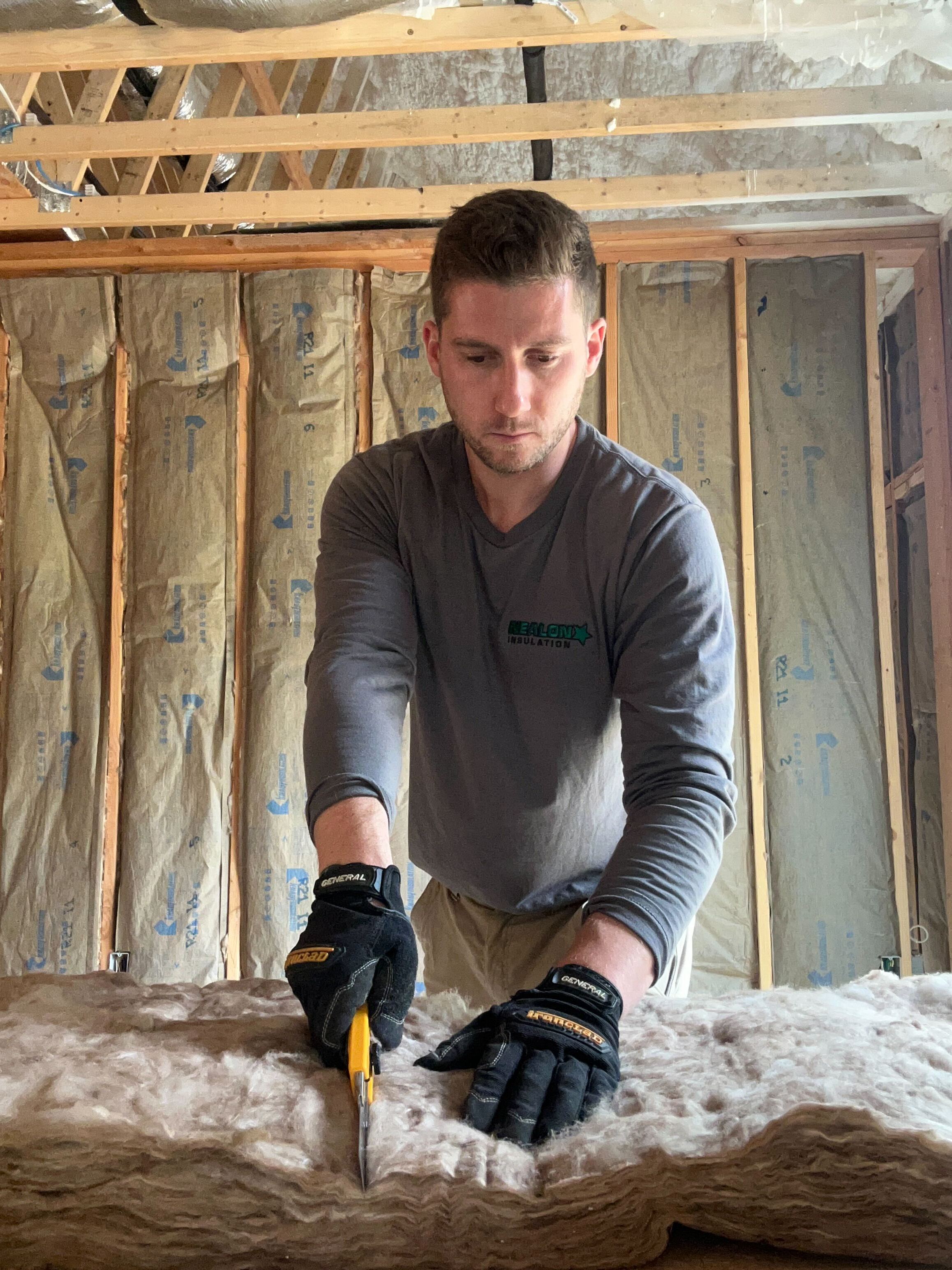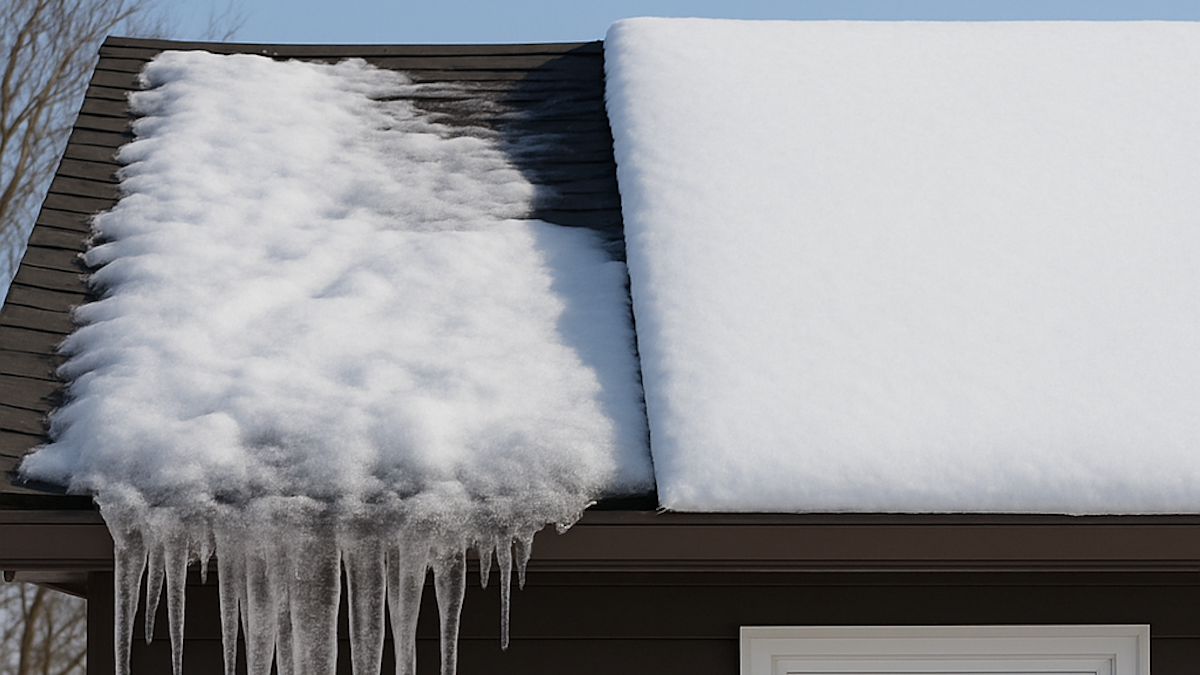Is Attic Insulation Toxic? What Every Homeowner Should Know

If you’ve ever climbed into your attic and come out coughing, itchy, or vaguely unsettled by what’s up there, you’re not alone. A lot of Connecticut homes—especially the older ones—still have attic insulation that’s seen better decades. And that begs the question: Is this stuff even safe?
The short answer? Some insulation can be toxic, especially the older types. But not all. And not always in the way people think.
In this post, we’ll break down which types of attic insulation might be harmful to your health, how to tell if yours is a problem, and what safer, modern alternatives are out there. Whether you’re worried about asbestos, fiberglass particles, or chemical off-gassing from spray foam, we’ll help you cut through the noise and get real answers—no scare tactics, no fluff.
Why People Worry About Toxic Insulation
Insulation’s job is to stay out of sight and keep you comfortable. But when it starts making you uncomfortable—scratchy throat, musty smells, mystery dust—it’s no surprise people start asking if their attic insulation is toxic.
Here’s why it’s a legit concern:
- A lot of older homes still have mystery insulation. If your house was built before the 1980s, there’s a chance it contains asbestos—especially if the attic was insulated with vermiculite. No label, no paperwork, just a flaky gray pile that could be hazardous.
- Fiberglass can irritate your lungs and skin. Newer fiberglass is safer, but if it’s uncovered and deteriorating, those tiny glass fibers can float into your living space and cause problems—especially for people with allergies or asthma.
- Some spray foam releases chemicals while curing. If it wasn’t installed correctly or fully cured, it might off-gas volatile organic compounds (VOCs) that affect indoor air quality.
- Insulation traps more than heat. Old or poorly installed insulation can collect mold spores, pest droppings, dust, and even dead critters—none of which you want circulating through your home’s air.
Bottom line? Not all insulation is toxic. But certain types can be, especially if they’re old, damaged, or improperly installed. Knowing what’s in your attic is the first step to knowing whether it’s safe—or quietly messing with your air quality.
Which Types of Attic Insulation Might Be Harmful?
Not all insulation is created equal—and some of the older stuff has aged about as well as milk in the sun. Let’s break down the most common types found in Connecticut attics and whether you should be concerned.
Asbestos (Used pre-1980s)
If your home was built before the early '80s and you’ve got what looks like gray, flaky pebbles in the attic, hit the brakes. That could be vermiculite insulation, and a lot of it (especially the kind from Libby, Montana) was contaminated with asbestos.
Why it’s a problem: Asbestos fibers, when airborne, can lodge in your lungs and cause serious long-term health issues—including cancer. You can’t tell if insulation has asbestos just by looking at it. You need professional testing.
What to do: Do not touch it. Disturbing it makes it more dangerous. Call a pro who’s licensed to test and remove it safely.
Fiberglass Insulation
Pink or yellow fiberglass is probably the most common attic insulation out there. It’s not “toxic” in the way asbestos is, but it can still irritate your lungs, skin, and eyes—especially if it's old, dusty, or exposed.
Why it’s a concern: Tiny glass fibers can become airborne if the batts are crumbling or if you’re moving around in the attic. Some older versions may also have had formaldehyde-based binders, though most modern fiberglass is now formaldehyde-free.
What to do: If it’s intact and covered, you’re probably fine. But if it’s degrading, or you’re sneezing every time you open the attic door, it may be time for an upgrade.
Spray Foam Insulation
Spray foam gets a lot of love for its air-sealing power—and rightly so. But not all spray foam is created equal. When installed improperly, it can off-gas VOCs, especially during the first few days after installation.
Why it’s a concern: If you smell strong chemical odors long after install day, that’s a red flag. Some early formulations of spray foam contained blowing agents or additives that caused allergic reactions or respiratory irritation in sensitive individuals.
What to do: When installed properly by a trained pro, modern spray foam (especially low-VOC, water-blown formulas) is considered safe once cured. But quality and install conditions really matter here.
Cellulose Insulation
Here’s the good news: cellulose insulation is one of the safest options out there. It’s made from recycled newspaper treated with borate, which resists fire, pests, and mold—without off-gassing nasty chemicals.
Why it’s not a concern: No fiberglass, no formaldehyde, no VOCs. Unless it’s gotten soaking wet and moldy (in which case, you’ve got a roof issue), cellulose is usually the least of your worries.
What to do: If your cellulose is dry and evenly packed, it’s likely doing its job just fine. If you’re not sure what you’re looking at, call someone who can tell the difference.
How to Tell If Your Attic Insulation Is Toxic
You don’t need a hazmat suit every time you pop into the attic—but you do need to know what you’re dealing with. Most homeowners don’t realize they’re living with potentially harmful insulation until they start noticing symptoms or do a renovation.
Here’s how to spot the red flags:
- You don’t know what it is or when it was installed
If your home was built before 1990 and no one’s touched the attic since, odds are good that insulation hasn’t aged gracefully. Unknown origin? That’s your cue to get it checked. - It smells… off
A musty, chemical, or “burnt plastic” smell in the attic could point to mold, rodent waste, or improperly cured spray foam. Insulation should be neutral-smelling. If it’s stinking up your HVAC or upper floors, it’s time to investigate. - You feel it—literally
Coughing, sneezing, itchy skin, headaches—especially after spending time near the attic? That could be fiberglass particles, mold spores, or off-gassing VOCs. It’s not just in your head (well, it kind of is, but you get the point). - It’s falling apart
Dusty batts, crumbling piles, or compressed chunks are signs your insulation is way past its prime—and could be spreading particles into your home. - You see pests or moisture damage
Rodents love nesting in insulation, and wet insulation becomes a breeding ground for mold. Both are more than just gross—they’re signs your insulation may now be contributing to poor air quality, not preventing it.
What to Do If You Suspect Harmful Insulation
If your gut’s telling you something’s not right up there, trust it. Attic insulation isn’t something you want to mess with blindly—especially if it’s old, unknown, or giving off weird smells.
Here’s what to do next:
1. Don’t Disturb It
Especially if you think it might be asbestos or contaminated vermiculite. Moving it around can release harmful particles into the air. Same goes for old fiberglass that’s turned to dust.
2. Call a Professional for an Inspection
You need someone who can identify the material safely. A trained insulation contractor (👋 hi, that’s us) can test, inspect, and give you a clear action plan—no pressure, no guesswork.
3. Don’t Just Cover It Up
Throwing new insulation on top of questionable material traps moisture and makes future remediation harder and more expensive. If it’s toxic, insulation needs to be removed the right way.
4. Replace It with a Non-Toxic Alternative
Once the bad stuff’s out, choose something safe, modern, and high-performing—like cellulose, mineral wool, or low-VOC spray foam. More on that next.
Safe, Modern Alternatives to Toxic Insulation
You’re not stuck with the old stuff. Today’s insulation materials are safer, greener, and way more effective. Here are some top picks:
Dense-Pack Cellulose
- Recycled newspaper, treated with borates
- Pest-resistant, fire-retardant, VOC-free
- Ideal for attic floors and slopes
Formaldehyde-Free Fiberglass
- Modern batts or blown-in types
- Budget-friendly, less irritating, Greenguard-certified
- Best when covered and sealed properly
Low-VOC Spray Foam
- Air-seals like a champ
- Choose water-blown or low-VOC formulas
- Must be installed by a pro—quality matters
Mineral Wool (Rockwool)
- Fireproof, sound-deadening, mold-resistant
- Doesn’t sag or compress over time
- Great for attics with heat or sound concerns
Quick Comparison Table
*Spray foam must be installed correctly and allowed to cure fully to be considered non-toxic.
Common FAQ's about Toxic Insulation
Do I need to remove my old attic insulation before adding new?
You need to remove old attic insulation if it’s toxic, damaged, or contaminated—such as insulation with asbestos, mold, rodent waste, or water damage. Otherwise, issues get sealed under new material. If it’s clean and up to code, it can be topped off after inspection.
How can I tell if my attic insulation contains asbestos?
You can’t confirm asbestos in attic insulation by appearance alone. Vermiculite insulation, often used before the 1980s, may contain asbestos and looks like gray, flaky pebbles. A certified lab test is the only reliable way to know. Don’t disturb it—call a professional for inspection.
Is it safe to be in the attic if the insulation is old?
It may be safe to enter an attic with old insulation if the material is intact and uncontaminated. However, if it’s crumbling, dusty, or smells unusual, it could release harmful particles. Limit exposure and have the insulation inspected to ensure safety.
Can attic insulation make you sick?
Attic insulation can make you sick if it contains asbestos, mold, or off-gassing VOCs. These materials may cause respiratory problems, skin irritation, or headaches. Even fiberglass can irritate when disturbed. If you feel unwell in the attic, inspection is recommended.
What’s the safest insulation material for attic upgrades?
The safest insulation materials for attic upgrades are dense-pack cellulose, formaldehyde-free fiberglass, and mineral wool. These options avoid VOCs, off-gassing, and airborne glass fibers. Low-VOC spray foam is also safe when properly installed and offers excellent air sealing.
Final Verdict: Is Attic Insulation Toxic?
Here’s the straight answer: Some insulation can be toxic—but not all, and not always.
If your attic still has insulation from the '70s, or you’re seeing dust, smelling chemicals, or sneezing every time you open the hatch, it’s worth a closer look. Asbestos, degraded fiberglass, and poorly installed spray foam can absolutely cause health issues. But modern options like dense-pack cellulose, formaldehyde-free fiberglass, and low-VOC spray foam are safe, effective, and built to last.
The key is knowing what’s up there—and if it’s worth replacing. Don’t guess. Don’t just throw new insulation on top of something sketchy. And for the love of your lungs, don’t DIY it if you’re dealing with the unknown.
Related Articles
Let's Work Together
Ready to transform your home into an energy-efficient haven? Schedule your free energy assessment today and experience the Nealon difference for yourself.



